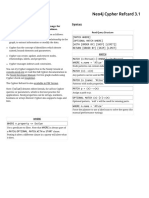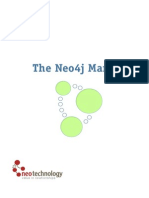0% found this document useful (0 votes)
29 views15 pagesNo SQL Pr-7
[{"Name":"Jo Friesen-Simonis","Credit_Card_Number":"5361010263874589","Issuer":"mastercard","Expiry_Date":"09/27","cvv":"702"},{"Name":"Jenny Cremin","Credit_Card_Number":"5209835316806527","Issuer":"mastercard","Expiry_Date":"08/26","cvv":"302"},{"Name":"Christy Volkman","Credit_Card_Number":"5172068123047639","Issuer":"mastercard","Expiry_Date":"10/26","cvv":"298"},{"Name":"Theodore Rodriguez","Credit_Card_Number":"5464442403012380","Issuer":"mastercard","Expiry_Date":"05/28","cvv":"714"},{"Na
Uploaded by
VIPER VALORANTCopyright
© © All Rights Reserved
We take content rights seriously. If you suspect this is your content, claim it here.
Available Formats
Download as PDF, TXT or read online on Scribd
0% found this document useful (0 votes)
29 views15 pagesNo SQL Pr-7
[{"Name":"Jo Friesen-Simonis","Credit_Card_Number":"5361010263874589","Issuer":"mastercard","Expiry_Date":"09/27","cvv":"702"},{"Name":"Jenny Cremin","Credit_Card_Number":"5209835316806527","Issuer":"mastercard","Expiry_Date":"08/26","cvv":"302"},{"Name":"Christy Volkman","Credit_Card_Number":"5172068123047639","Issuer":"mastercard","Expiry_Date":"10/26","cvv":"298"},{"Name":"Theodore Rodriguez","Credit_Card_Number":"5464442403012380","Issuer":"mastercard","Expiry_Date":"05/28","cvv":"714"},{"Na
Uploaded by
VIPER VALORANTCopyright
© © All Rights Reserved
We take content rights seriously. If you suspect this is your content, claim it here.
Available Formats
Download as PDF, TXT or read online on Scribd
/ 15























































































